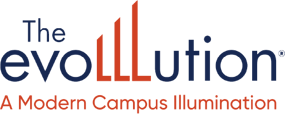Published on
Balancing Tradition and Innovation in Curriculum Leadership

As higher education navigates rapid workforce shifts, curriculum governance becomes a structural and cultural imperative, driven by mission clarity, shared governance and digital transformation to serve students with agility and purpose. In this interview, James Fisher discusses curriculum governance in a merged institution and leveraging technology for transparency and speed.
The EvoLLLution (Evo): Can you describe what effective curriculum governance looks like at a modern institution today?
James Fisher (JF): Pennsylvania Western University is both a new institution—we just finished our third year as Penn West—and an amalgamation of three traditional campuses stretching from Lake Erie to West Virginia, plus a large online campus.
When you integrate three universities into one, combining different strategies, curricula, processes and a whole lot else, it requires you to be self-conscious about how you do things, especially with curriculum governance and the related challenges many other universities face, including resource challenges in a rapidly changing learning and workforce landscape.
In that context, our curriculum governance reflects a few key things. We are looking at curricula holistically. Programming is an ecosystem. We can’t examine programs in isolation on their own merits but as part of an integrated collection. We’re asking ourselves how we strategically invest our resources, so all the programming we offer our students is impactful and sustainable. We’re also conscious of not just focusing on programs but programming—not just degrees but also minors, certificates, microcredentials and experiential learning. Sometimes a traditional degree is the best way to serve students and the workforce, but sometimes it’s not.
Effective curriculum governance must also be true to shared governance norms, which produces the best decisions. And you have to know who you are in terms of your missions and strengths. Most institutions will not be everything to everyone. Finally, have a predictable calendar for your curricular governance process.
Evo: What are the common bottlenecks that academic teams face when it comes to approval processes and catalog updates, and what impact do those delays have on the student experience?
JF: If your curricular process isn’t designed well, there are two main impacts on students. One is that you won’t serve prospective and current students in a timely way. If students expect institutions to respond to workforce or societal needs and the process doesn’t work, you’re not fulfilling your mission.
The second impact is that needed catalog updates don’t happen. You can help students through exception processes in the short term—substituting one course for another, for example—but that’s extra work for everyone.
There are two questions you can ask to help avoid bottlenecks. First: Is your process scaled to your institution’s size? Our pre-Penn West processes worked with smaller committees and relatively inflexible calendars, but they were not particularly nimble and would be slow for a larger institution. Second, does your process reflect your shared governance norms? You can move proposals quickly, but if people don’t feel heard you’ll hit bottlenecks and resistance—either at the start or end of the process. And once again, you won’t be serving students.
Evo: How can technology help institutions move from reactive curricular change to a more proactive and market-aligned governance model?
JF: Technology can help—and it’s helped us. We use Modern Campus Curriculum for our process at Penn West. It’s helped us improve efficiency in decision making while facilitating shared governance and input from varied perspectives.
Technology allowed us to move our curricular process from a paper paradigm to a digital one. Before, physical proposals were passed from office to office. Even emailing PDFs meant forms were still moving. Now, proposals live in a single place. People dip in and out, providing input without passing anything around.
It’s efficient, but it also broadens access. For example, we use digital open comment periods. Everyone can see proposals, provide input in real time, and no one is excluded. Departments now have a practice of regularly dipping into the system to check on proposals. And as long as there are time limits on input, the process moves predictably. For us, it’s been both more efficient and more inclusive.
Evo: What strategies can academic leaders use to ensure transparency, consistency and accountability across functional curriculum teams?
JF: The key thing is that these practices don’t occur overnight. The answer to the classic question, “Do institutions affect culture or does culture affect institutions?” is yes—both.
You can consciously redesign your curricular process using technology, but it takes intention and practice. People need time to adjust and get habituated. We’ve had to think very consciously about how to operate as a contemporary institution.
But it takes time to reinforce those practices. Things evolve. We used to modify curricular proposals by retyping and reprinting—very inefficient—with multiple versions floating around. Now it’s easier. You don’t need to create something new. You track changes, and it’s right there. It just takes time. There’s patience and intentionality involved in making sure your culture is catching up to the institutional changes you’ve made.
Evo: How can academic affairs teams balance academic rigor with the operational need for speed in launching new programs?
JF: The approach differs, depending on whether you’re modifying an existing program or creating a new one. For modifying an existing program, it’s about the quality of your periodic program review and student learning outcome assessment. If those are strong and built into your culture—not just a box-checking exercise—you already have a good contemporaneous understanding of your programs. That gives you a solid foundation for timely updates.
You also want input from academic leadership, faculty, the career center, admissions, advisory boards and other relevant stakeholders—those who are practiced at listening to both student interests and workforce needs. If you’re in regular conversation about the evolving landscape, you’re in a better position to react.
For standing up entirely new programs, especially those outside your traditional mission or strengths, the required investment will be bigger and the needed research and ROI analysis deeper. If, in contrast, your institution wants to create a new program that is an organic extension of existing strengths—like building a healthcare informatics program from data science and biology programming—then you probably already know that area and your talent base fairly well. So, you’ve already done some of the groundwork, and it’s more a matter of confirming what students are asking for, aligned with what the job market seems to need.
Last, set the right level of generality combined with the right kind of programming. You don’t want to create programming in fax machine operation. You want programming in technological literacy. Or, with AI, maybe don’t create a bachelor’s in AI but develop relevant credentials layered into existing degrees or general education. Again, it’s about offering the right kind and mix of credentials to meet diverse student needs, whether traditional learners or those just looking to upskill, all while staying true to your mission.
Evo: Is there anything else you’d like to add?
JF: If you look at Pennsylvania Western as an example of a contemporary institution, you’d think that three similar institutions in the same state system—with the same labor union governance and state policies—would be basically the same, but it’s remarkable how distinct their cultures and processes were.
The lesson for all higher ed institutions is that, while for us the self-reflection involved in creating Penn West was a necessity, for others it can be a choice—to step away from the specific milieu you’ve been operating in and think more generally about your processes, to recenter around first principles and affirm or redevelop your best practices in today’s higher ed landscape.
It’s a healthy exercise. Disruptive and a little stressful, yes, but so is the entire higher ed landscape right now. So, leaning into that self-conscious re-examination of how you do things is absolutely worth it.



